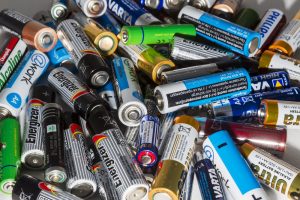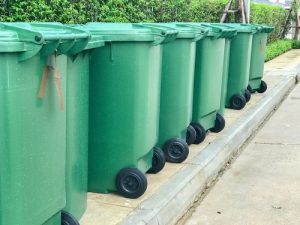 Last year closed with record-setting numbers for battery collection and recycling in North America, according to stewardship group Call2Recycle.
Last year closed with record-setting numbers for battery collection and recycling in North America, according to stewardship group Call2Recycle.

 Last year closed with record-setting numbers for battery collection and recycling in North America, according to stewardship group Call2Recycle.
Last year closed with record-setting numbers for battery collection and recycling in North America, according to stewardship group Call2Recycle.
New Jersey Gov. Chris Christie has killed two pieces of recycling-oriented legislation – one focused on updating the state’s struggling e-scrap program and another creating a paint stewardship program.
 California regulators are threatening to bring the hammer down on a carpet stewardship group, saying it has failed for years to grow carpet recycling.
California regulators are threatening to bring the hammer down on a carpet stewardship group, saying it has failed for years to grow carpet recycling.
 A proposal to give Connecticut’s environmental agency the authority to create stewardship programs for a range of products has drawn substantial opposition from key recycling industry stakeholders.
A proposal to give Connecticut’s environmental agency the authority to create stewardship programs for a range of products has drawn substantial opposition from key recycling industry stakeholders.
 More than 134,000 jobs in the U.S. are in some way supported by exports in the recycling industry, according to a new analysis.
More than 134,000 jobs in the U.S. are in some way supported by exports in the recycling industry, according to a new analysis.
 A pair of Northeast states accept applications for recycling-related grants, and funds are awarded for a host of initiatives in Midwest and West Coast jurisdictions.
A pair of Northeast states accept applications for recycling-related grants, and funds are awarded for a host of initiatives in Midwest and West Coast jurisdictions.
 Can separation of recyclables from trash ever be a cost-effective solution? According to three experts speaking at Waste Expo, the answer depends on some critical conditions.
Can separation of recyclables from trash ever be a cost-effective solution? According to three experts speaking at Waste Expo, the answer depends on some critical conditions.
 Over the past three years, nonprofit group The Recycling Partnership has helped deploy 400,000 recycling carts to communities across the U.S.
Over the past three years, nonprofit group The Recycling Partnership has helped deploy 400,000 recycling carts to communities across the U.S.
By challenging the economic and environmental value of recycling, New York Times science columnist John Tierney has poked the recycling stakeholders hornet’s nest. Again.

Trina Matta, Sustainable Packaging Coalition
How can recycling players be sure their material choices aren’t damaging other links in the recovery chain? One industry collaboration has developed a resource to help.
